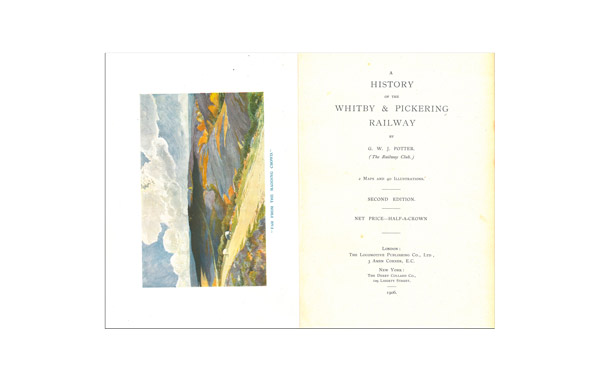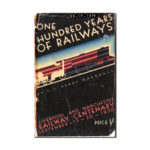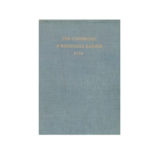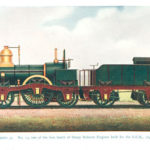Description
G.W.J.Potter, was a prominent Member of the Railway Club, which had been formed in 1899, a typical comfortably-off “Railwayac” of the late Victorian-Edwardian era, and a regular contributor to the Railway Magazine, often on matters connected with the North Eastern Railway. In the days when libraries were libraries and full of books, what a treat it was for a schoolboy railway enthusiast, browsing the shelves to find a gem like this, well designed to suit the content and beautifully bound and printed on good quality paper. Contrast with the formulaic histories, published in the 1950´s and 1960’s by Ian Allan, David and Charles etc., large chunks of text, interspersed with two or three signatures consisting of half tone blocks, often very small, badly cropped and allowed to bleed off the edge of the page. The situation began to improve in the1970s with offset printing techniques and imaginative design from White Swan and OPC. It was (and still is) a real pleasure just to handle a book like “Whitby & Pickering”.
In 1795 it was proposed to construct a canal from Whitby to Pickering along much the same course as the later railway. After the success of the Stockton & Darlington Railway, which had a number of Whitby backers, attention switched to the possibility of a railway from Whitby to either Pickering, or Stockton. Many pamphlets were issued for or against the various proposals. In 1832,despite just having completed the world´s first passenger and freight steam railway, the Liverpool and Manchester, George Stephenson was asked to report on the rival routes. Stepping back in time to pre Stockton & Darlington technology, taking into account the sinuous nature of the route, the condition of the ground, and likely capital available, he favoured a horse-worked railway to Pickering and his conclusion was accepted at a meeting in Whitby on 14 September 1832. The Whitby and Pickering Railway bill received the royal assent, from William IV, on 6 May 1833.
The total cost of the line was £80,000, but with extra land purchased for probable enlargements, the cost was about £105,000, or £4,400 per mile.
The book covers the construction of the railway and horse-drawn operation, purchase and rebuilding for steam-haulage by the York and North Midland and subsequent operation by the North Eastern Railway, up to the days of the Edwardian “Push -Pull” Autocars. In passing we learn that despite rebuilding,sharp curves remained, necessitating the provision of special compact wheelbase locomotives, the “Whitby Bogies” by NE Loco Supt. Edward Fletcher.
This is a comprehensive history of the first seven decades of what is now one of Britain’s best-known preserved railways . The North York Moors. The line fromRillington Jcn to Whitby closed as a result of the cuts imposed by Dr. Beeching,along with most of Whitby’s railway links. The line from Battersby Junction along the Esk Valley to Whitby was reprieved saving six miles (10 km) of the original W&P between Whitby and Grosmont.
In 1967 the North Yorkshire Moors Railway Preservation Society (NYMRPS) was formed with the aim of preserving the line between [Grosmont and Pickering and re-opened as a Heritage Steam Railway. The NYMRPS became a charitable trust, the North York Moors Historical Railway Trust Ltd and succeeded in re-opening the line as the NYMR in 1973. So the route of the W&P survived, partly as a British Rail, line partly as a preserved one.
In 2007 the NYMR obtained the necessary powers and agreements to operate steam trains over the line from Grosmont to Whitby and as far as Battersby, the first UK preserved railway to operate regular trains over part of the National Network. Steam trains once again run between Whitby and Pickering.
PREVIEW BELOW – MAY TAKE A WHILE TO LOAD.






Reviews
There are no reviews yet.